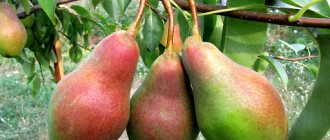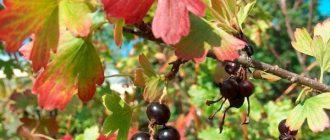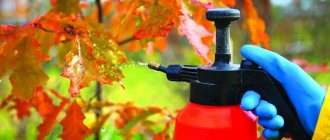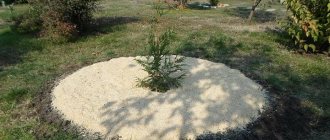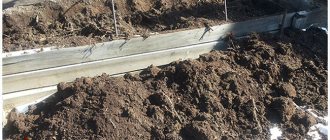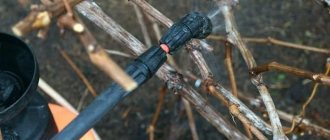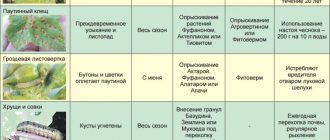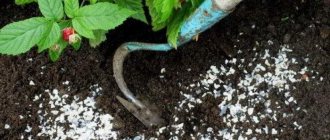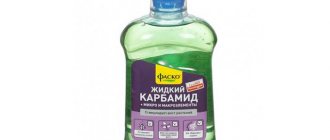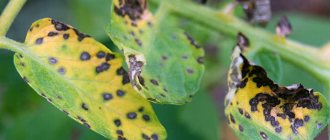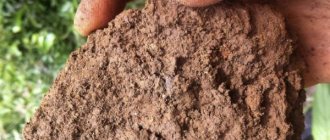Fruits and berries » Strawberries
0
6549
Article rating
Kira Stoletova
Throughout the entire period of growth and development, strawberries are damaged by various parasites and diseases, so it is impossible to do without chemicals. Proper and timely care serves as prevention. Let's look at how to treat strawberries against pests and diseases in the fall and how to do it correctly.
Autumn processing of strawberries - important tips
Why process strawberries in the fall?
Healthy strawberries produce a bountiful harvest, high-quality berries, ready for processing or sale. But even if the bushes were not sick in spring and summer, they can be affected in the fall, because pests hide at this time for the winter, and strawberry bushes are quite a suitable place for them. At the same time, strong winds and frequent rains are favorable weather conditions for the proliferation of fungal and viral diseases.
Photo of strawberry processing in autumn
Important!
In the summer, you need to carefully monitor what the strawberries were sick with, what pests affected them, so that in the fall you can use drugs specifically against those pests and diseases that are present on the site. Thus, processing strawberries in the fall will be more effective and bring more benefits.
Autumn processing of strawberries is aimed at destroying all pests that hide in the axils of strawberry leaves, near the root system, as well as diseases that have already settled on them.
Chemical and biological agents against diseases
You can treat strawberries against pests and diseases in the fall using various fungicides created under production conditions.
| Means | Dilution rate (g/l) | What is it processed from? |
| Topaz | 2/10 | Rot, rust, |
| Copper oxychloride | 20/10 | Spotting, rot. |
| Bordeaux liquid | 100/3 | Fungal and bacterial diseases. |
| Fundazol | 5/5 | Powdery mildew. |
| Alirin-B | 2/10 | A large number of pathogenic fungi. |
| Fitosporin | 30/10 | Bacteriosis, powdery mildew, leaf rust, fusarium, late blight. |
| Switch | 100/5 | Late blight. |
| Zircon | 2010 | All types of spotting. |
| Teldor | 8/10 | Scab, brown spot, powdery mildew. |
| Trichodermin | 50/10 | Gray, white rot, cytosporosis, late blight, verticillium. |
| Nitrafen | 200/10 | Scab, spotting. |
| Copper sulfate | 30/10 | Fungal pathologies. |
When is the treatment carried out?
Also check out these articles
- Broiler chickens
- New Zealand white rabbit
- The best pear jam recipes
- Blagovarskaya breed of ducks (cross)
Strawberries are processed in the fall after the last harvest has been harvested. If you grow simple strawberries, you can do it at the end of September. But if the strawberries are remontant, then the processing is postponed until October-November, when the last berries are collected.
Before processing, it is necessary to remove the bed. All old, dry leaves, in which pests and diseases can hide, are removed from the bushes, the rows are thoroughly cleaned of weeds, fallen leaves - a hotbed for the spread of fungal spores. You can also dig up the row spacing so that during treatment the drug can easily penetrate into the soil and not just get on the leaves of the plants.
Preparing strawberries for winter
In addition to using plant protection products, in the autumn you should not forget about organic and mineral fertilizers. Some of them (all types of complex fertilizers such as NPK, ammophos) must be applied to the soil under the bushes in the fall. Their active ingredients begin to work actively in the spring, enriching the soil with all useful microelements. This helps to increase the viability of strawberries and increase yield rates.
To create favorable conditions for wintering strawberries, you need to use mulching. This will be especially good protection during cold winters without snow, when temperatures drop to -17 degrees.
To make mulch, you can use any materials of plant origin. Dry fallen leaves of various crops, humus, peat, sawdust, old pine needles or sunflower remains can create an optimal microclimate for plants for wintering.
To do this, you need to cover the soil around the bushes by at least 7 cm. Leaves, tree branches or snow should completely cover the strawberries, which will provide favorable conditions for them while they are in a state of winter sleep.
Dense cover must be removed at the onset of the first spring warmth, otherwise the greenhouse effect will cause rot to appear on the leaves, which will significantly reduce the viability of the crop.
At the same time, the hope increases that the bushes will easily enter the active growth phase, which guarantees early results in the form of a luxurious and natural harvest in the near future.
How to treat strawberries against diseases in the fall?
Most often, strawberries are threatened by diseases such as gray rot, powdery mildew, brown and white spot. You should also be wary of black root rot, verticillium wilt, late blight, spotting, and red root rot. In autumn it is difficult to cope with all diseases, so you can carry out several treatments with complex drugs that help against many diseases.
The photo shows a variety of strawberry diseases
- "Topaz" is used against powdery mildew, white and brown spot. It is suitable in the early stages of the disease and when the problem is already advanced.
- “Nitrophen” is also considered a good product; it destroys fungal spores that are present on the strawberries themselves and those that have fallen into the ground.
- "Bayleton" copes well with powdery mildew and spotting.
- "Teldor" is used against gray and black rot.
- If plants are severely affected by white or brown spotting, they need to be treated with a special compound. For 300 g of copper sulfate, take 300 g of lime and 10 liters of water.
Important!
When late blight or horse rot appears, the affected bushes should be removed from the site and new ones planted, but preferably not in the same place, but in a new one.
The preparation for autumn processing of strawberries is selected depending on what preparations are available on the market and what diseases are most often found on the site.
Disease Control
A universal way to get rid of many strawberry diseases is to treat them with copper sulfate. To do this, prepare a solution by mixing 10 liters of water and 3 g of blue crystals. The plants are sprayed with this liquid and then covered to preserve them during winter frosts.
Treating the crop in the fall against pests and diseases with a soap solution of the same copper preparation also helps. It is prepared from 3 liters of boiled, cooled water, 5 g of the substance and 200 g of grated laundry soap. After thoroughly mixing everything, the liquid is poured into a spray bottle and the plantings are treated.
Gray rot
This disease is characterized by the appearance of a grayish fluff on the berries. As a result, they rot and become covered with gray marks that fly out from the spores. You can fight gray mold with the preparations “Fito-plus” or “Fitosporin”. They are diluted and used according to the instructions on the package. A solution of 1 liter of water and 1 tsp also helps. Bordeaux mixture, which needs to be sprayed on plants.
Powdery mildew
This disease manifests itself as a thin, cobweb-like coating on the surface of leaves. They become covered with rusty spots, become deformed and curl upward. The berries become covered with a whitish coating with a moldy smell, and then dry out.
The drug “Sulfarid” helps to cope with this disease. Dilute 2 tbsp in 10 liters of clean water. l. Infected plants are treated with this product.
White, brown and brown spotting
When infected with brown spot or cladosporiosis, the plant becomes covered with round brick-red spots. Spots first appear along the edges of the leaf blades. Then they grow and become covered with dark pads of mycelium. The cause of this disease is excessive moisture, weeds or dense plantings.
White spotting or ramulariasis can be recognized by small round brown spots with white dots. They cover the stems and leaves.
Important!
The greatest danger is brown spotting in the form of brown spots with a dark edge. They are usually concentrated on the main vein of the leaf and on its edges.
You can get rid of these diseases by watering the bushes in early autumn with a solution of the drug “Fitosporin”. Zircon also works well. Copper oxychloride effectively gets rid of all types of spotting. Dilute 1 tbsp in a bucket of heated water. l. the drug and treat the plantings.
Black root rot and viruses
In plants infected with black root rot, the lower tier of foliage first becomes brown in color, and then dries out and dies. Sick bushes emerge from the soil without any effort. A closer look at the root system reveals cracking of the main taproot. Young roots of such plants die.
Virus infection manifests itself in different ways. In spring the leaves become curly, and in autumn they turn yellow along the edges. In summer, a mosaic virus rages, causing yellow spots to appear on the leaves.
Important!
Currently, treatment for such diseases is impossible. Therefore, plants infected with black rot and viruses are destroyed.
Late blight
The cause of this disease is frequent rains and high air temperatures. Late blight manifests itself as small gray-brown spots on the surface of the leaf blades. In this case, the fruits become deformed, lose their taste, and then completely dry out, covered with brown spots. To eliminate this disease, after harvesting, the berries are sprayed with Switch, Euparen or Topaz.
Verticella wilt
This is a fungal disease, expressed by a decrease in yield and the gradual death of the bush. Infection occurs through the root system, into which the mycelium penetrates. This causes the roots to dry out and growth to slow down. Then the leaves acquire a red-yellow hue and fall down. The fight against this disease comes down to the destruction of infected plants.
Chlorosis
The cause of this disease is a lack of certain elements. Exactly what substance the plant lacks can be judged by its appearance. With iron deficiency, the foliage becomes whitish or yellow, but the veins retain their natural color. In this case, the bushes need to be watered with iron sulfate in the fall.
You may be interested in:
Advice from experienced gardeners on growing strawberries in spring Gardeners simply cannot imagine their garden without tasty berries and fruits, but if fruit trees need constant...Read more...
A lack of magnesium causes large strawberry leaves to turn yellow. The color change begins at the edges and gradually spreads to the entire plate. In this case, medications containing magnesium will help.
Strawberry pests
We recommend reading our other articles
- What are the advantages of polycarbonate greenhouses
- Pear variety Clapp's Favorite
- inkstone
- Remontant strawberries - the best varieties
Pests that often plague strawberries include earthen and spider mites, aphids, strawberry-raspberry weevils, slugs, and snails. Bushes can also be affected by nematodes, small black mowers, alfalfa mowers, and strawberry sawflies.
Pests of strawberry leaves
Important!
Some pests, such as nematodes (strawberry, stem), are not eliminated by insecticides. To remove them from the site, it is necessary to replace the bushes with new, healthy ones. It is also advisable to change the soil if possible!
Processing strawberries in the fall involves the use of insecticides against pests. Since it is carried out after the harvest, you can use quite strong drugs that will certainly help get rid of annoying insects.
The most common pests and diseases
Before starting work, it is necessary to assess the scale of the tragedy by examining each bush separately. The appearance of brown spots, which are not the causes of natural autumn wilting, should alert you.
Advice!
If any deviations from the norm are found, dried berries or damaged leaves must be urgently removed. It is best to burn them to prevent further development of diseases or insects.
Snails and slugs
Snails and slugs are not easy to remove. But if you systematically fight them, they will definitely leave the area. To begin with, you should use the mechanical method. They are simply collected by hand as they appear. It is better to do this in cool weather, when they crawl out of their shelters.
The slug not only spoils the leaves, but also eats strawberries
When mechanical cleaning does not produce results, insecticides can be used. During the autumn processing of strawberries, the insecticide “Metaldehyde” is used. It copes well with snails and slugs. Plants are not sprayed with it, but granules are simply scattered around the bushes where these pests most often appear.
Chemical and biological pest control products
Let's look at what chemicals can be used to treat strawberries.
| Means | Dilution rate (g/l) | Who is processing from? |
| Alatar | 0,5/4 | Weevils, leaf beetles, aphids, mites, whiteweed. |
| karbofos | 30/10 | Strawberry, spider mites. |
| Intavir | Wide spectrum of action | |
| Verticillin | 25/1 | Whitefly. |
| Fufanon-Nova | 7/6 | Thrips, scale insects, sawflies. |
| Agrovertin | 1/10 | Mites, thrips, aphids. |
| Phosbecide | 5/5 | whiteflies, weevils, mites, aphids, scale insects, thrips, sawflies |
| Fitoverm | 4/1 | Most pests. |
| Aktellik | 2/2 | Thrips, false scale, mite, aphid, sawfly, codling moth. |
| Manganese | 2/10 | Aphids, mites. |
| Apollo | 2/5 | Red ticks. |
| Aktofit | 2/1 | Nematode, spider mite. |
| Aktara | 4/1 | Treatment against 200 insects. |
| Metaldehyde | Pellets are scattered. | Against snails and slugs. |
There are other means, but they are used strictly according to the instructions.
Treating strawberries against aphids and mites
If strawberry or spider mites often appear on your site, you should definitely treat the strawberries with a remedy against them in the fall. For example, “Aktellik”, “Karbofos”, “Aktofit” or “Fitoferm”. True, "Actofit" is usually used when the plant is growing - in the spring, and after harvesting, "Fitoverm", "Aktellik" and "Karbofos" are considered more effective. You can also use a solution of Bordeaux mixture (3-4%), potassium permanganate or copper sulfate (2-3%).
Aphids on strawberries
These same products help effectively fight aphids on strawberries. Treatment of strawberries in the fall is sometimes carried out after the old leaves have been cut off, some gardeners cut off young leaves, that is, aphids may not be visible, but if they were there in the summer, even in small numbers, it won’t hurt to treat them.
Interesting!
Folk remedies against diseases and pests can be used, but when processing strawberries in the fall, this is only suitable if in the spring and summer the crop was not sick and was not affected by insects or diseases.
Among the folk remedies for ticks and other pests, a solution of 10 liters of water, 2 tablespoons of liquid soap, 3 tablespoons of vegetable oil, 2 tablespoons of vinegar and 2 tablespoons of ash will help. All this is mixed well and used for spraying. To prevent aphids, you can also simply sprinkle the top of the bushes with wood ash ground into dust.
Autumn treatment of strawberries with copper sulfate
This drug is considered a universal remedy that is widely used in the garden. Experienced summer residents always have copper sulfate on hand, as it helps get rid of powdery mildew and other diseases.
To process the berries, you need to stir 3 g of blue stone in a bucket of water. We spray the plant and then cover it so that it does not die in winter.
There is another solution for treating Victoria. In 3 liters of boiled, cooled water, stir 5 g of copper sulfate and 200 g of grated laundry soap. Mix everything thoroughly for several minutes. Pour the liquid into a spray bottle and spray the bushes.
Treatment of strawberries in the fall from weevils and other beetles
There are two types of weevils that harm strawberries: earthy and gray root. If they are not dealt with, they can quickly spread throughout the area and destroy strawberry plantings. Autumn processing of strawberries allows you to cope with beetle larvae, which live on the roots and feed on their juices, and adults, which can hide in hard-to-reach places of the bush.
Photo of beetles on strawberries
If we talk about strong chemical preparations, Actellik, Intavir, and Aktara are good for removing weevils. Most often they are used when flower stalks or buds appear, but the products are also effective in the fall. And what’s more, they help not only against weevils, but also against a number of other pests, including sawflies, mowers, and ticks.
Autumn processing of strawberries is an important part of plant care. If you carry it out year after year, there will be no pests or diseases on the bushes. The plant will be able to fully develop and produce abundant harvests.
Pest Control
Strawberries are one of those plants that are very attractive to insect pests. Therefore, to obtain a high-quality harvest one has to make considerable efforts. The earlier it is started, the more successful the struggle will be. And if agricultural practices are used correctly, the risk of infection is reduced to a minimum.
Whitefly
The whitefly is a tiny butterfly measuring up to 1.5 mm. It has two pairs of whitish wings covered with a wax-like coating. This insect lives on the lower part of the leaves and sucks the juice from them. There, adults lay eggs, from which larvae later hatch. They also feed on plant sap.
To combat whiteflies, use a solution of the drug "Aktara". To begin with, dissolve 4 g of the drug in 1 liter of water heated to +25 degrees. Then pour 250 g of concentrate into the tank of the backpack sprayer and fill the container with water to 1/4 of the volume. After thoroughly mixing the solution, spray strawberries in the fall.
As an alternative, the drug Intravir is used. 1 tablet of the substance is dissolved in 1 liter of water. Then the concentrated solution is diluted with 9 liters of clean water.
Ticks
Strawberry mites are almost impossible to see on the plant, since their length is only 0.2 mm, and their body is translucent with a yellowish or brown tint. Their invasion causes the bushes to grow to a dwarf size. To combat them, use a Karbofos solution at a concentration of 0.3%. To prepare it, dissolve 30 g of the substance in 10 liters of water.
You may be interested in:
How to properly plant strawberries in the fall Just plant it and enjoy the delicious berry “from the heart”, this is definitely not a conversation about strawberries, it’s better to realize in advance that...Read more...
Spider mites are tiny insects up to 0.5 mm long with a whitish body. Their presence can be detected by cobwebs and light spots on the upper side of the leaves. To combat them, strawberries are treated with poisonous drugs “Apollo”, “Phosbecid” or “Nero”. They can be replaced with a safe solution “Fitoferma”, prepared from 1 ampoule of the drug and 1 liter of water.
Weevil
Externally, weevils look like small black bugs with an oblong body up to 2 mm long and bulging eyes. They lay their eggs in unopened flowers, from which the larvae then emerge and eat the center of the bud. They can be detected by punctures on the leaves. So, the insect drinks the juice from them. To combat weevils, strawberry bushes are sprayed with Aktara, Iskra-bio or Intavir.
Important!
Weevils cause the greatest harm to strawberries during dry periods.
Nematode
To detect nematodes, strawberry bushes are inspected in early September. At this time, small colorless worms up to 1 mm long often appear on the foliage. It is very difficult to detect them, so they pay attention to changes in the plant itself. Signs of the presence of nematodes are swelling on the stems and leaf blades, curvature and reduction of petioles.
It is not possible to destroy the nematode using chemicals or traditional methods. Infected plants are dug up and burned. The soil is disinfected by adding lime. Plants cannot be grown in this area for a year. And it is forbidden to plant strawberries for several years.
Caryopsis and strawberry leaf roller
The weevil is a relatively large black beetle with a body length of 1 cm. This mobile insect feeds on strawberry seeds and eats away the pulp around them, causing the berries to take on an ugly appearance.
Strawberry leaf roller caterpillars can be recognized by the transparent web with which they entangle plant leaves. They prefer to eat the green part of strawberry bushes and sometimes berries.
To destroy these pests, the crop is treated in the autumn with a hot solution of potassium permanganate. An infusion of onion peels also helps. To prepare it, soak 200 g of raw materials in 10 liters of heated water and leave for 5 days, and then spray the bushes.
Treating berries with garlic infusion in the fall helps against pests and diseases. To do this, grind 200 g of vegetables and pour 10 liters of water for 3 hours, and then treat the plants.
Other pests
Brown bugs up to 4 mm long are strawberry leaf beetles. They settle on the leaves of strawberry bushes and devour them. Aphids also live there. Treatment of strawberries against these pests comes down to spraying with an aqueous solution of iodine, Nitrofen or Nurell-D preparations.
Slugs and snails eating strawberries are removed by hand and then destroyed. You can scare them away by placing granules of the drug “Metaldehyde” next to the plants.
How to treat strawberries from gray rot without cutting leaves
In the fall, it is recommended to remove all damaged and dry leaves, but if you did not have time to do this, you can still treat the strawberries with special preparations.
The following remedies are suitable in September and October:
- Nitrophen. Apply in late autumn. 150 g of paste should be mixed in 10 liters of heated water. Spray the bushes with the resulting mixture and pour it into the soil. The drug helps fight gray mold, as well as many pests.
- Copper oxychloride. Stir 1 tablespoon of the product in a bucket of warm water. We spray the crop not only in the fall, but also in the spring.
- Folk remedy. In 10 liters of warm water we dilute 500 ml of liquid soap, 3 tablespoons of vegetable oil, 2 tablespoons of wood ash and 2 tablespoons of table vinegar. We process the soil and bushes.
All these solutions help fight diseases that summer berries are susceptible to.
Video: autumn treatment of strawberry beds from pests and diseases
Strawberry plantations need to be treated against pests and diseases not only in the spring. According to most gardeners, autumn preventive measures have a much greater effect compared to spring treatments and can significantly reduce damage from fungal pathologies, as well as from attacks by harmful insects during the next growing season.
- Author: Maria Sukhorukikh
Rate this article:
- 5
- 4
- 3
- 2
- 1
(0 votes, average: 0 out of 5)
Share with your friends!
